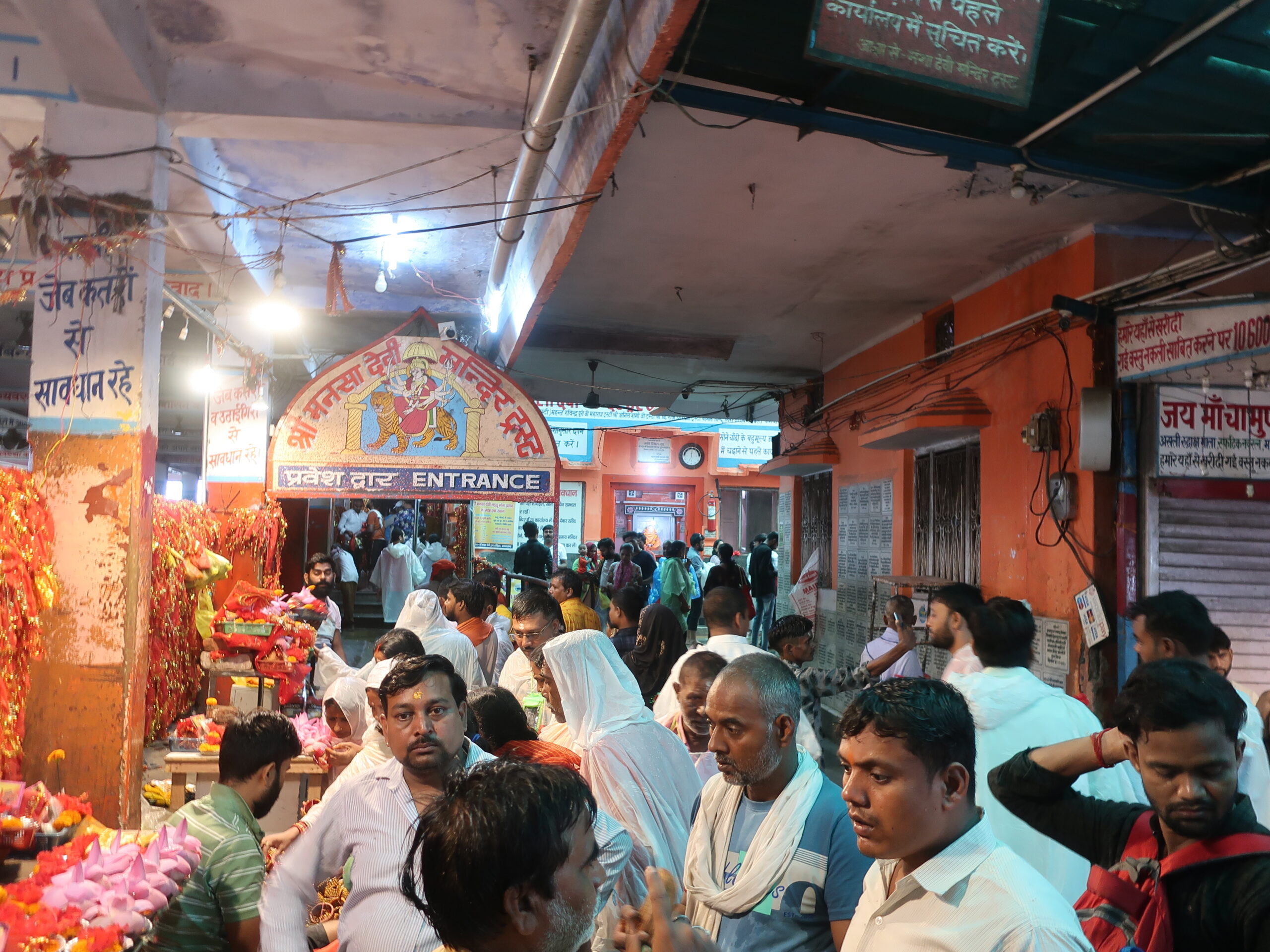(5) Feel the theme park of the gods at the Mansa Devi Temple in Haridwar - an immersive experience in the Hindu worldview.
We left the inn around 11:00 am. Today's destination is the Mansa Devi Temple, a Hindu temple atop a mountain just outside the city.
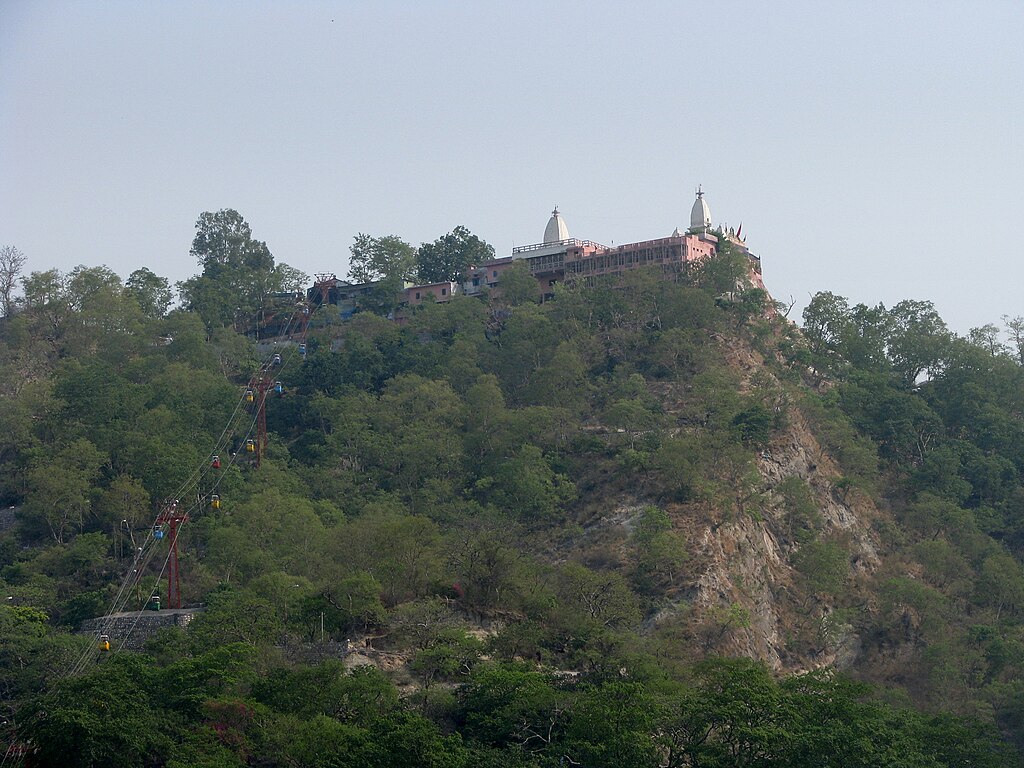
I was told that the most convenient way to reach this temple was by a ropeway that leaves from the foot of the mountain, and I started walking through Haridwar city toward the boarding point.
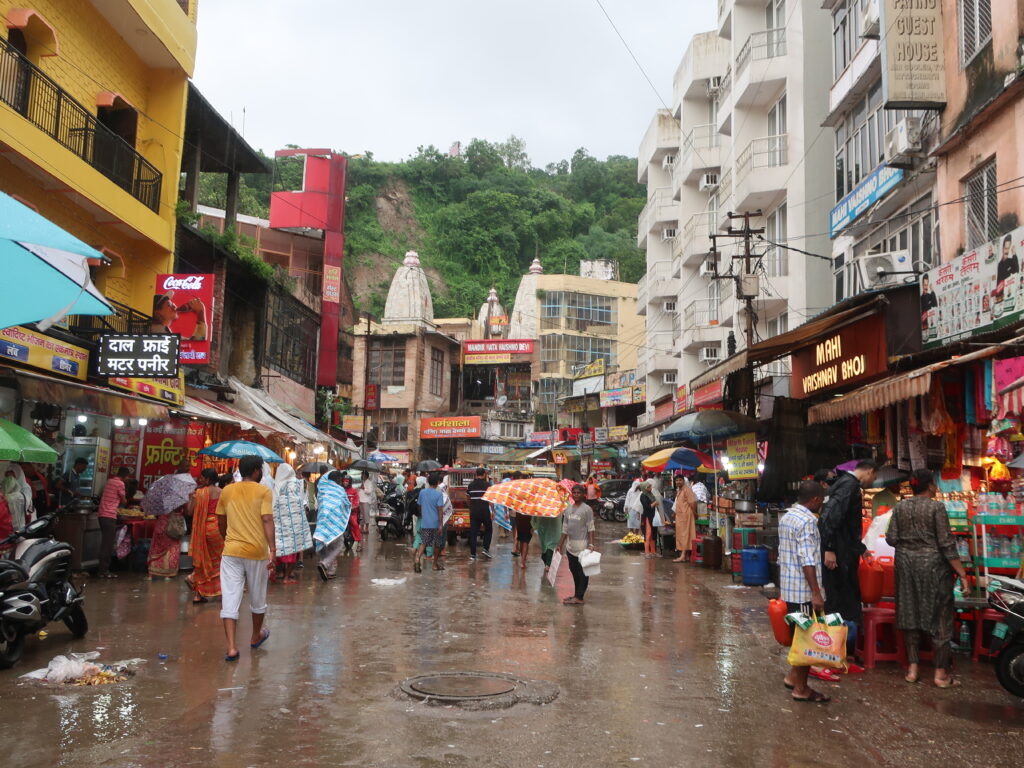
The rain that has been falling since early morning has yet to stop. I am too lazy to even say it out loud, but I walk down the messy road where various things are mixed together. My shoes are already dirty and stained with white stains.
As this is a bazaar, there are stores lining both sides of the road, but this is not the time to be distracted by them. If you are not careful, rickshaws and motorcycles will come crashing into you. It was a good thing that the road was still wide, but it could have been narrower and more crowded. But even in narrower and more densely populated areas, motorcycles would still run into you. The horns of the motorcycles sounded incessantly from in front of and behind us. It was hard for me to get used to this. I felt like a herbivore on the savanna. I was afraid that India might eat me at any moment. This also gradually drained my strength.
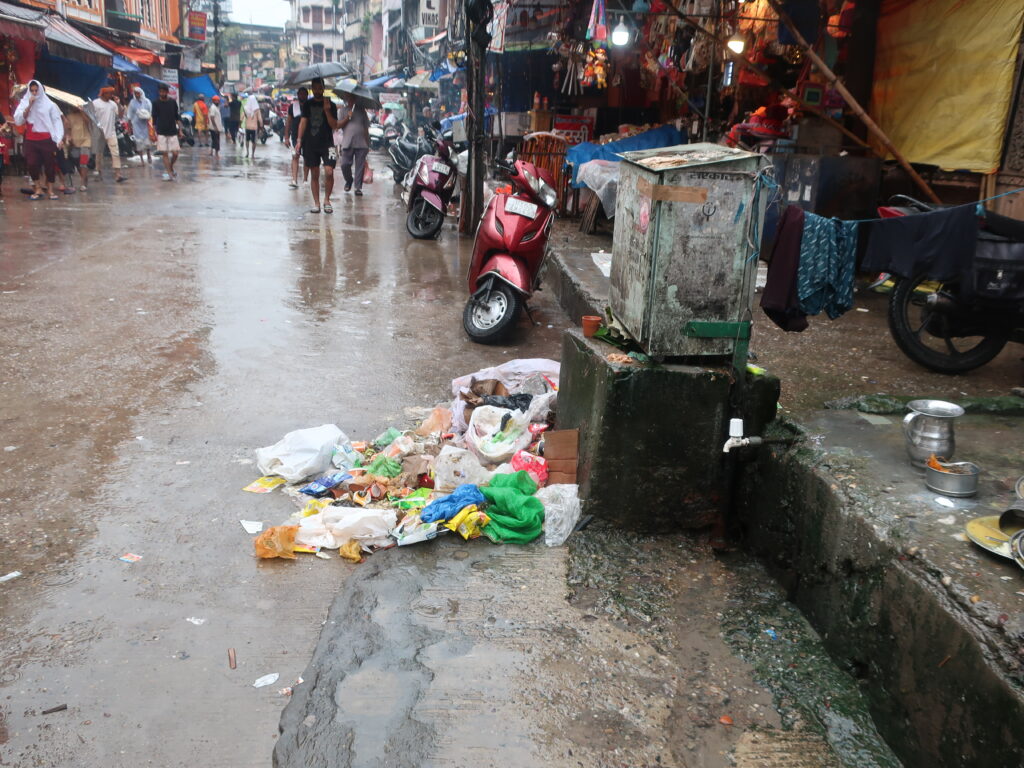
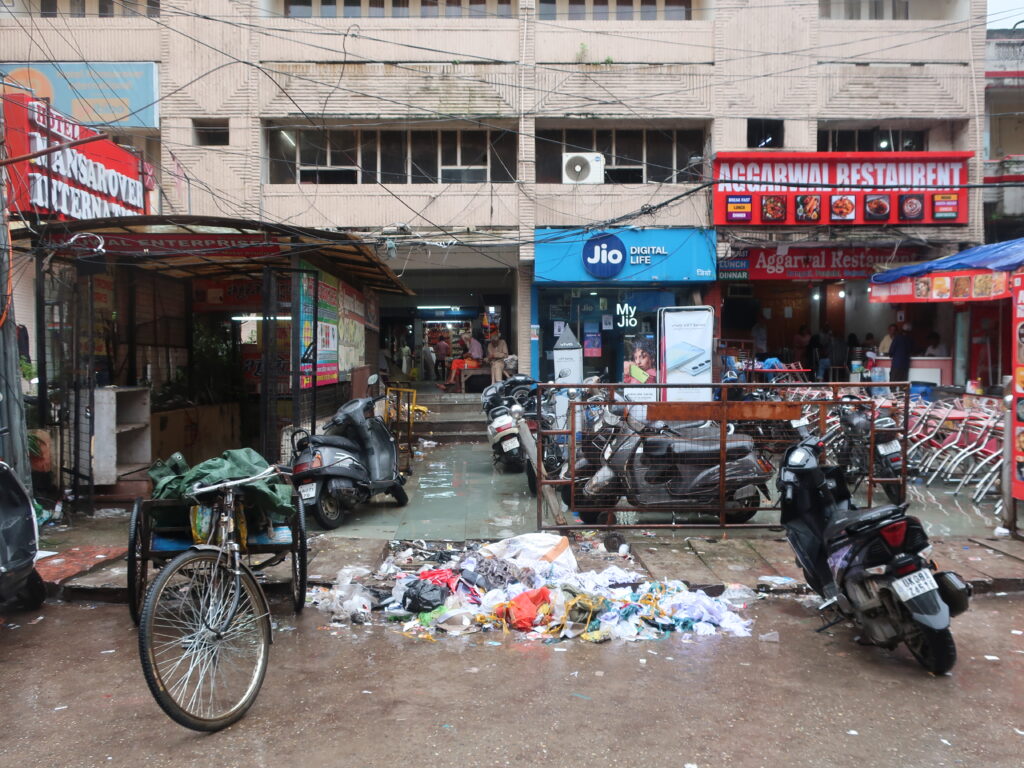
But still, it is dirty. Everywhere you look, there is garbage. It was all put together in this way, but mixed with the muck from the rain, it was hard to say what it was. And, although not always, a fishy rotten smell sometimes wafted in on the wind. This was a problem for me. The rainy season gives a freshness to the dirtiness, I thought. This is tough. As a beginner in India, I was beginning to think that this place might be too spartan for my introductory visit.
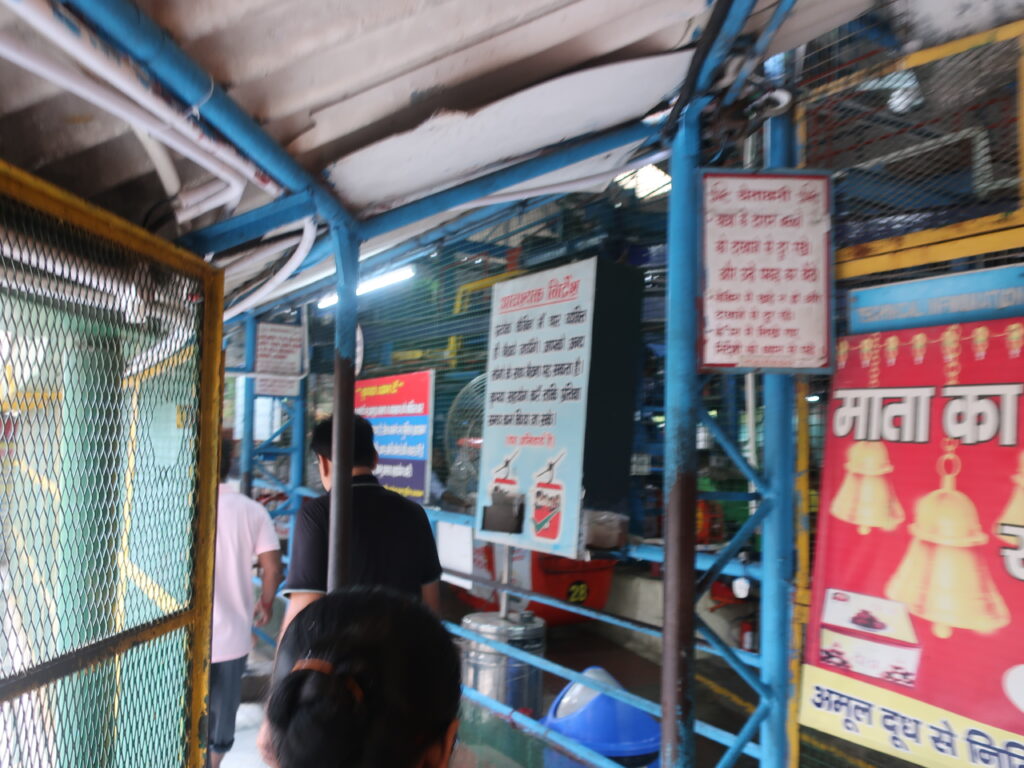
Arrived at the ropeway stop. Sorry the photo is a little blurry. However, I was also surprised when I checked my photos later. Many of the photos I took that day were blurry. I can only assume that my agitation was directly reflected in the photos. I did not even have time to calm down and take pictures.
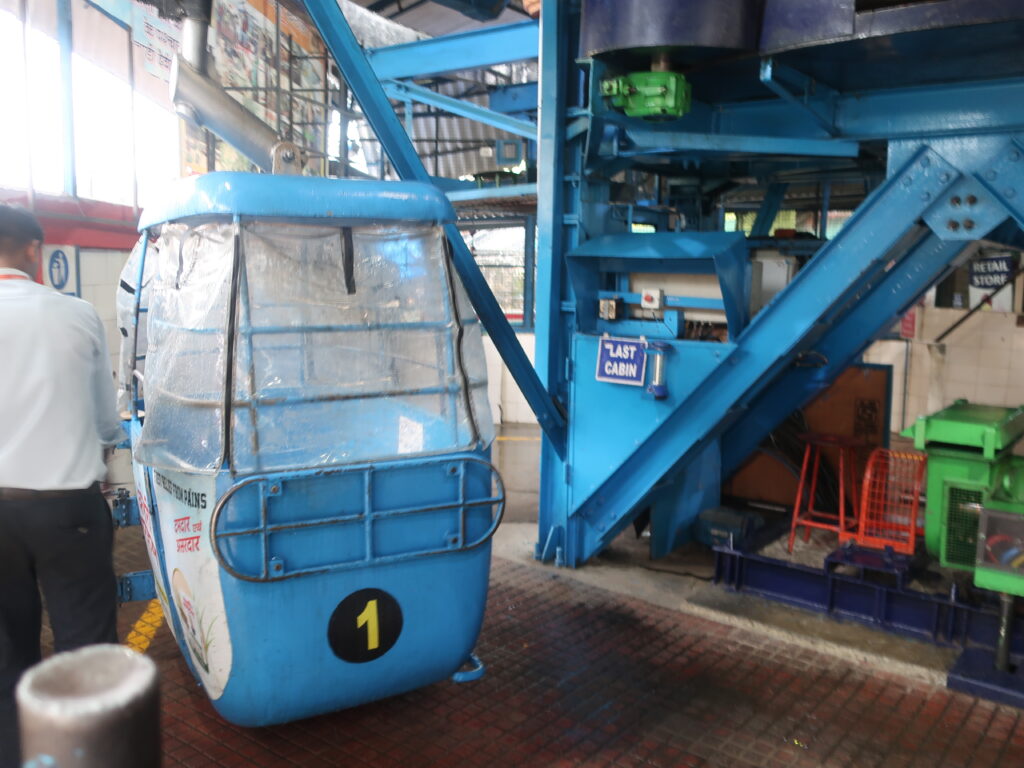
It is a ropeway, but it is a ride like an old children's amusement park. Anxious. Very anxious. There is wind today...
However, the ropeway was unexpectedly fast and stable. I was relieved to know that we would be all right, but we must not let our guard down. After all, this is India. (Although there is nothing we can do about it.)
From the ropeway, we could see Haridwar and the Ganges River. It was clear that the ghats were only part of the Ganges, which is a wide river.
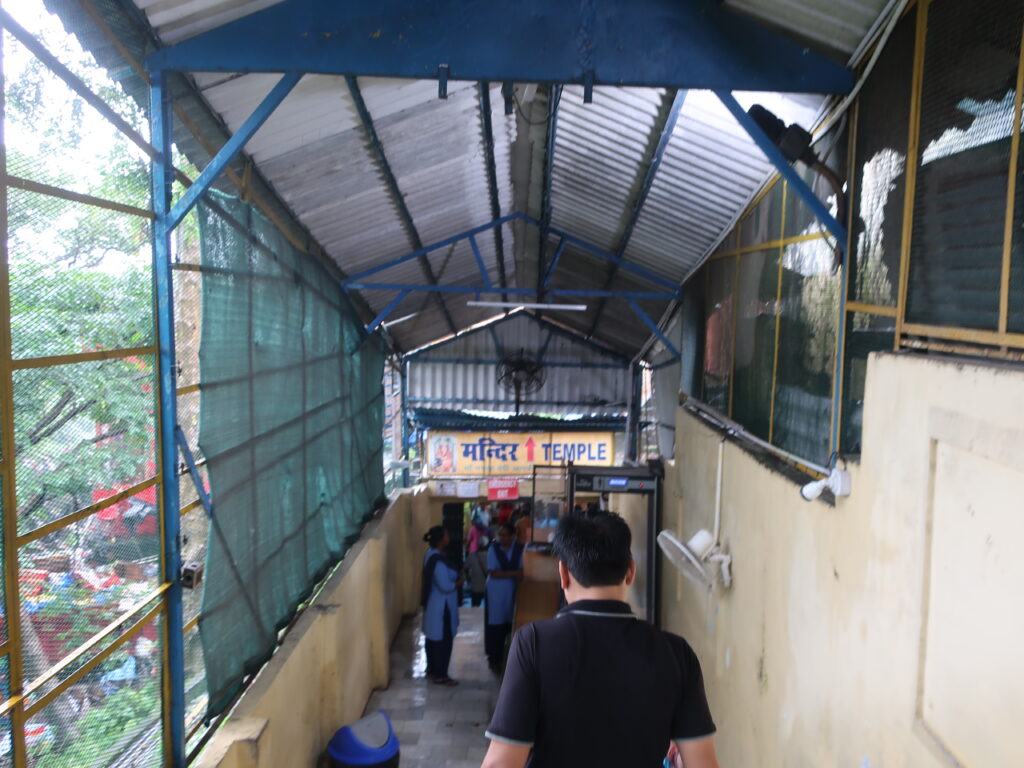
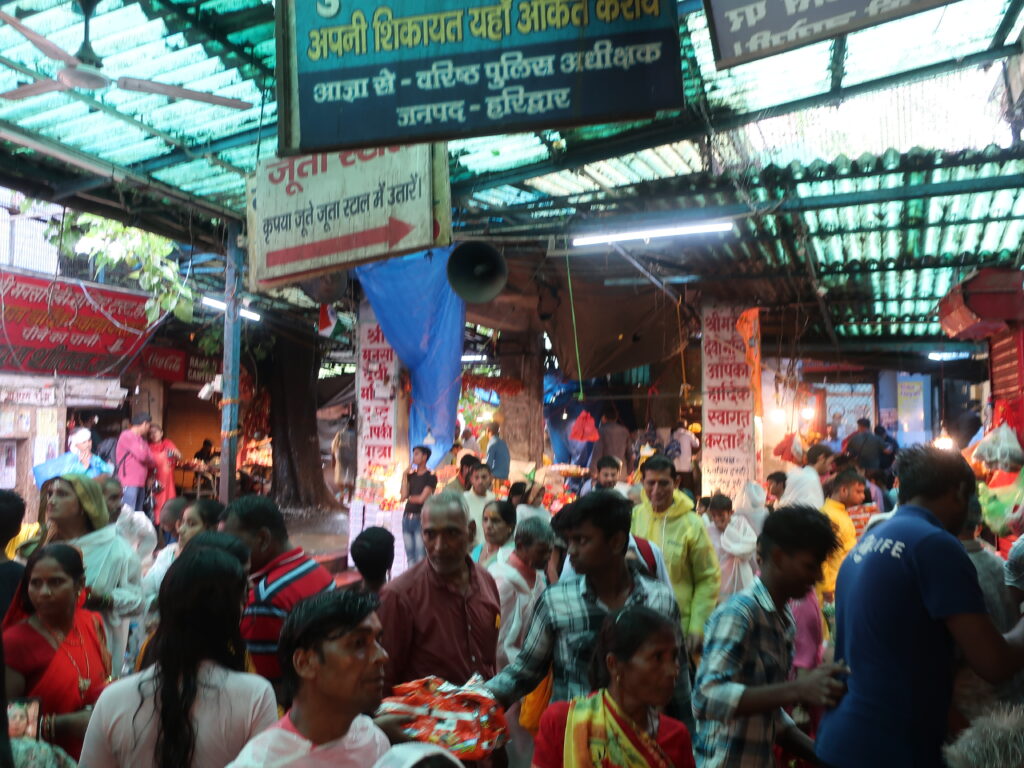
After exiting the ropeway, a passageway leads into the Mansa Devi Temple. The two are directly connected.
The moment I entered the temple, I could feel the muffled heat. The ventilation was weak, or maybe it was the heat from the people, but at any rate, the air had obviously changed. And the leakage is terrible. The water was dripping down in a way that went beyond the level of dripping. It is better not to think of this place as an indoor place anymore. The concrete floor of the temple is almost completely soaked. Puddles of water are everywhere. Moreover, no one is allowed to walk on the ground from here. You have to walk barefoot.
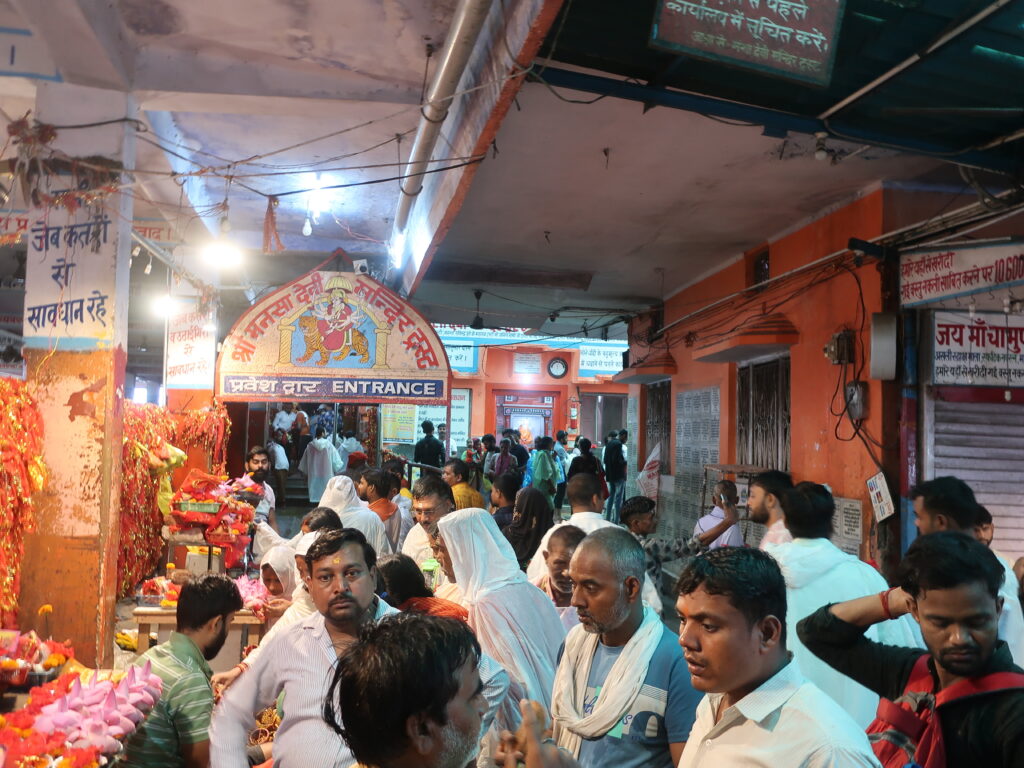
In front of the entrance to the main sanctuary of the temple, there is a store with a variety of offerings. After purchasing offerings and flowers, visitors enter the temple. This is also where shoes are kept. Of course, there is a charge for this service.
I fearfully go barefoot. Ahhh... the floor is wet... I have no idea what kind of water this is either. I definitely don't want to touch it. In Varanasi, it is said that people got sick just by dipping their fingertips in Ganges water. I am touching it now with my bare feet....
I move forward slowly and steadily. I feel the sensation of cold water, fine gravel, and garbage on my soles. The most irresistible sensation is that of the wet flowers on the floor. Rainwater had soaked into the flowers on the floor, causing them to become semi-liquefied. I am horrified to think back on it now.
At the same time, however, it occurred to me. By taking off my shoes and going barefoot in this way, the sensation in my soles becomes acute. And that's not all. I felt that even my five senses, of which I was only vaguely aware, became more sensitive. That is probably why the sensation of the slippery soles remained in my memory to this extent. It would not have been so if I had remained in my shoes.
In India and Sri Lanka, sacred places usually require people to go barefoot, whether indoors or outdoors. This is not only a matter of etiquette, but also to activate the five senses.
Hmmm...this is interesting. If it activates the five senses, that is fascinating. Then why don't we in Japan do the same and go barefoot?
Oh, I was doing it. Come to think of it, Japanese people always take off their shoes. But not barefoot. No, barefoot may not be good for wooden buildings and tatami mats. I don't know exactly, but it was interesting to see the difference between the stone culture and the wooden culture.
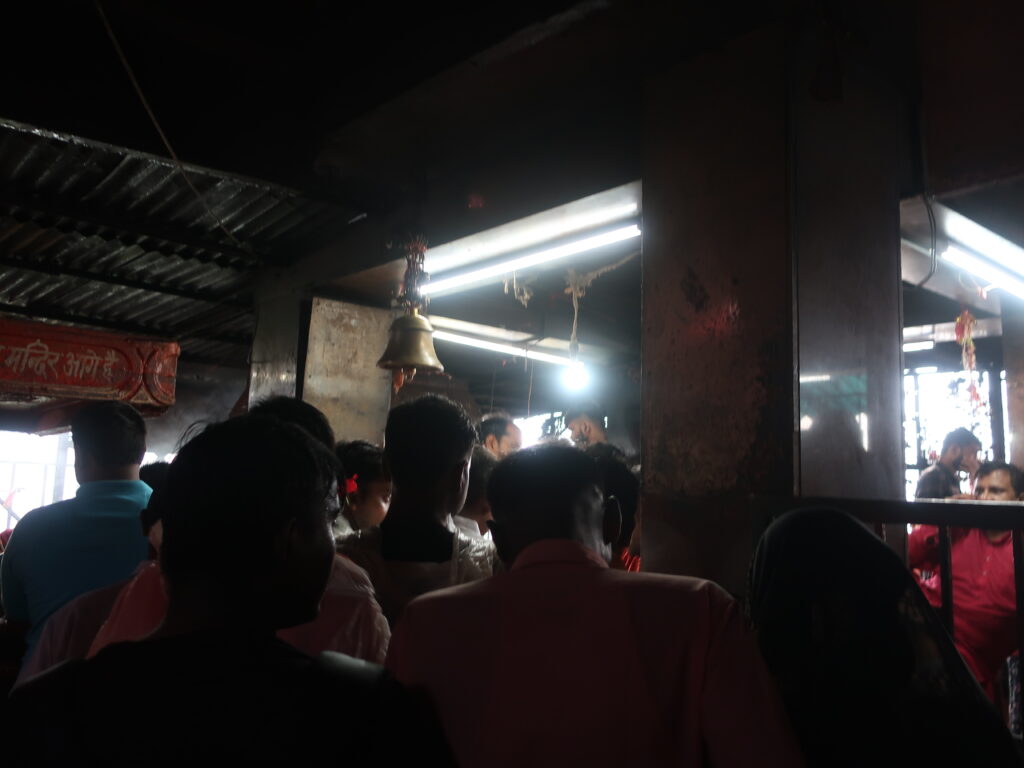
Now comes the hard part. We are in line and moving little by little toward the back of the line.
Here, too, one must be on one's guard. If you make even the slightest gap between you and the person in front of you, you will be immediately sidetracked. Therefore, you must always be close enough to the person in front of you. For us Japanese who want to have a certain sense of distance between people, this zero-distance waiting is quite a mental burden. The heat and smell of people can be felt immediately. I think the vividness of India can be felt even in such places.
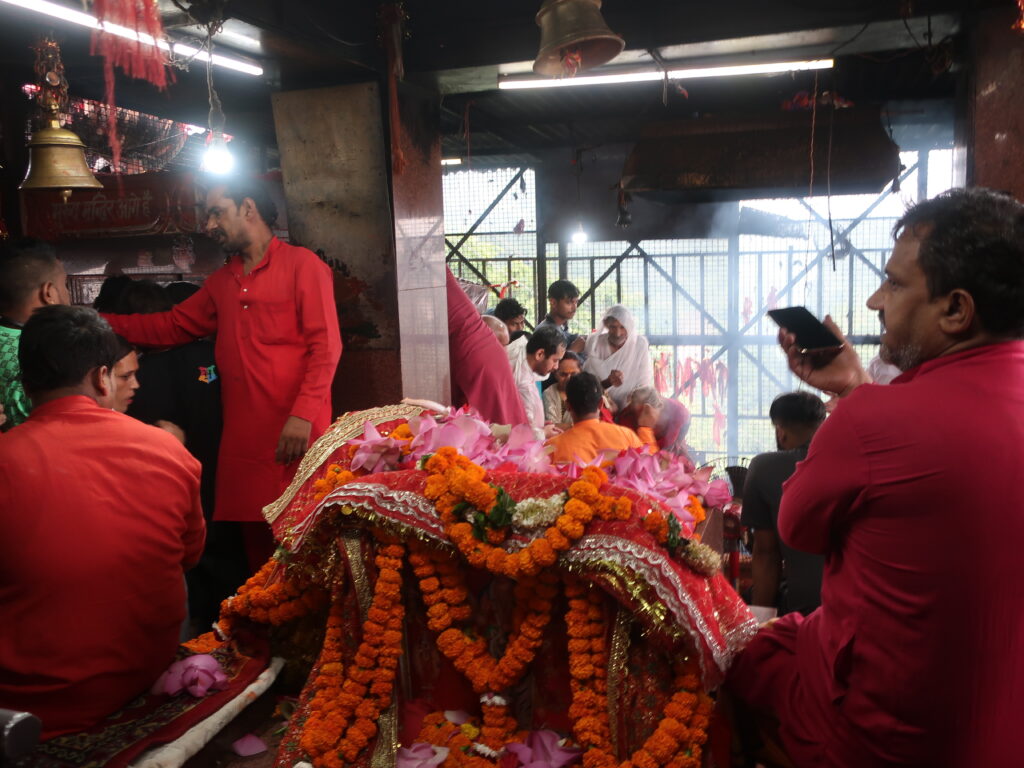
Finally, we came to the center of the temple. The route is all one-way. Along this route, there are altars of gods and goddesses. At each one, a Brahmin (religious person) is present to receive offerings and donations, and in return, we are marked on our foreheads and prayed to.
It is not like a Japanese temple, where there is a large main hall and the principal image is in the back. Instead, the procession is a procession of people walking in order from one altar to the next, each time making a request to the gods.
As is well known in Japan, India is a polytheistic world. There are innumerable gods. Each god has his or her own specialties, such as luck in money, business, study, healing of illness, safe delivery, love, and so on.
The Mansa Devi Temple enshrines a variety of deities with different specialties, and if you walk along the route in order, you can pray for all kinds of wishes. As I walked along the path, I was impressed by the structure of the temple.
Of course, as the name "Mansa Devi Temple" suggests, the main deity of this temple is "Mansa Devi," a goddess who grants wishes of all kinds. It is no wonder that many pilgrims come here for the goddess.
However, one of the major attractions of this area is the altar of various gods enshrined along the path in sequence. This is because it is human nature, no matter how old or modern, that the more one prays and the more often one prays, the more likely one feels that one's wish will come true and the more grateful one feels. This is not a matter of logic. This is a feeling that we in Japan can understand.
Thus, they go around the altars along the worship route, giving offerings and money each time, and receiving signs and prayers from the Brahmins. The process is repeated many times along the route. The sight of these enthusiastic pilgrims pushing and shoving each other to be the first to receive blessings from the Brahmins in the enclosed space of the temple, filled with smoke and heat, is a truly unique sight. It was a very different space, a sacred space far removed from everyday life. This place is special. It was a space that made me feel that way.
But at the same time, I think. This place is just like a "theme park of the gods".
In other words, this is a Hindu space where various deities gather under the single theme of Hinduism, and altars are set up according to their respective rituals. In this special world, pilgrims offer their prayers according to a formula. This temple offers the experience of immersion in the Hindu worldview.
The space cut off from the outside world, the long waiting lines, the system of visiting altars one by one along the route, these may have something in common with the theme parks we go to. The signs and spells from the Brahmins could also be described as a truly experiential attraction.
It may seem inappropriate to use the words "theme park" or "attraction" to describe a sacred place of faith. But religion is not only religion. Religion is not only about being rigid and ascetic. Religion is not only about what is staid and ascetic, but also about the various elements that attract many people to it. Every religion has an entertaining aspect. This was also true of the puja I saw last night.
As long as such things actually exist, we cannot ignore them. I think it is beneficial for us to know that this aspect also exists in religion. Especially in this day and age when we value scientific and rational thinking. For modern people who cannot help but analyze everything, it is not a waste to know what role religion plays for people. To dismiss religion as mere superstition or something old-fashioned and archaic is, in my opinion, to dismiss human history and culture itself.
In fact, all the Indians who visit here seem to be enjoying themselves. It is obvious that this is a very attractive place for them. I was impressed by their open and happy faces.
*Below is an article with reference books on India and Sri Lanka that we have referenced in this travelogue. Please refer to them.
periodA list of recommended reference books to help you learn about Indian history, religion, and culture."
periodA list of recommended books for "those who want to know more about Indian Buddhism."
periodA list of recommended books to help you get to know the Buddhist country of Sri Lanka."
Next Article.
Click here to read the previous article.
Related Articles











